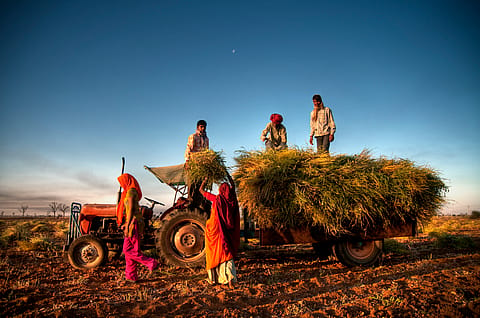Women farmers drive agri-chains but earn 60% less than men: WEF
Women earn up to 60% less than men and face constrained access to finance, training and technology, reveals a WEF report.

Women contribute to commercial value chains such as cotton, sugarcane, tea, coffee, and cashews, with nearly 50% participation, according to the Agritech for Women Farmers report by the WEF (World Economic Forum). However, they earn up to 60% less than men and face constrained access to finance, training and technology. In developing countries, women produce 60-80% of the food, the report finds.
The report focuses on agricultural technologies and practices designed to address the needs and challenges of both men and women aiming to promote gender equality among farmers. It involves developing digital solutions that are user-friendly and accessible for women to strengthen participation in agricultural decision-making.
It includes creating digital solutions that are accessible and easy to use for women, offering training and support to enable the uptake of these digital solutions, and building environments where these technologies can enhance women’s involvement in agricultural decision-making processes.
As per the report, the proportion of skilled agriculture labourers among women increased significantly from 48% in 2018-19 to 59.4% in 2022-23.
Women farmers in India spend around 32% of their time on agricultural activities, focusing on tasks like transplanting, weeding and harvesting, while also managing their household activities. Besides, women account for an estimated 47.1% of WhatsApp users worldwide, while in India, they represent 37.8% of users.
It takes note of the Telangana state government's partnership with agricultural organisations and tech firms, under its ‘Saagu Baagu’ project, to support chilli farmers using AI-powered tools. It reveals the initiative delivered a 21% increase in yields per acre, a 9% decrease in pesticide use, a 5% decrease in fertiliser use, and an 8% rise in unit prices, resulting in an $800 income boost per acre per cycle.
“At a macro level, research demonstrates that if the foundation for digital agricultural technologies is well laid, it could increase the agricultural gross domestic product (GDP) of low-and-middle-income countries (LMICs) by $500 billion or close to 28%,” the report adds.
The report states that female bank account holders are estimated to generate 12% more lifetime revenue than their male counterparts. “It is also estimated that banks could attract $2.9 million by serving 100 million low-income women across the country.”